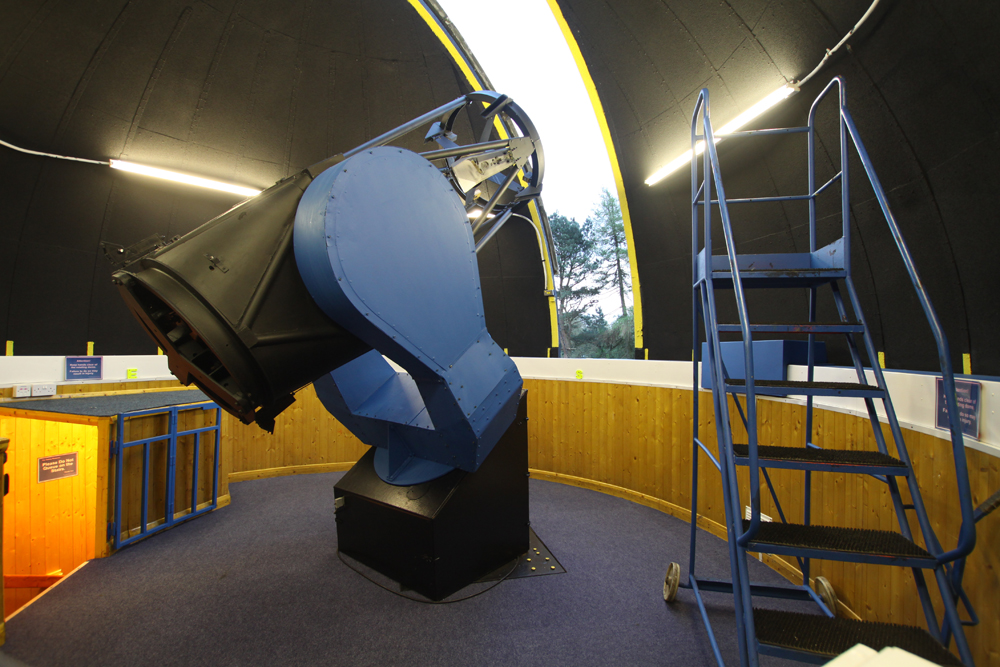The main Sherwood Observatory telescope uses a system of mirrors, in a Newtonian configuration. A 61-cm diameter main (primary) mirror collects light from the object being observed. Light reaching the primary mirror is reflected back along the optical tube in a converging cone of light, before reaching an optically flat oval mirror inclined at 45° to the light path.
The secondary 'flat' mirror is supported by an adjustable 'spider' system of cross braces. This spider is the cause of 'crosses' that can sometimes be seen superimposed on photographs of stars. The light cone reaching the secondary mirror is then deflected into an eyepiece focussing assembly affixed to the side of the telescope tube within the upper section.

Individual eyepieces provide a range of magnifications. Lower and intermediate powers are most frequently used. Seeing conditions determine how much magnification can be applied. High magnifications are effective only when the atmosphere is stable.
A single lens reflex camera body can be used in place of an eyepiece to photograph the Moon, planets, stars and a wide range of other objects. The CCD camera captures images more rapidly and these can be analyzed on a PC.
Video cameras provide a convenient medium for displaying objects to large numbers of people. This method also shows how atmospheric turbulence - known as 'seeing', determines image quality.
The telescope is driven to counteract the Earth's rotation, enabling objects to be kept in the field of view.
Bright objects such as the Moon, planets and stars down to naked eye visibility can be found by using one of two "Telrad reflex sights" mounted onto the rear of the telescope. When viewed from the rear, the Telrad provides a heads-up illuminated target which is aligned with the direction the telescope is pointing.
For fainter objects, where pointing accuracy becomes more critical, the 61-cm reflecting telescope is fitted with a fully computerised Sidereal Technologies Servo II controller, again calibrated to the direction of the telescope. With this, we can use standard planetarium software to command the scope to point at objects that are not bright enough to be seen with the naked eye.
As well as looking through the eyepiece, a CCD camera, SLR camera, or Astronomical video camera can also be connected to the telescope to allow images to be recorded for posterity. Some of the images we have secured with these devices can be seen in our online gallery.
Sherwood Observatory is a facility that has become larger than our original dream; in being a fund of ideas and progress in astronomy, we envisage it serving our community well in the years ahead.
Here is a video from back in 1991 of the scope as it was then, just before its mirrors were reinstalled after maintenance.
Note here that this was when the telescope was still configured with the original 3 mirror system. Thanks to Graham Shepherd for the video.



